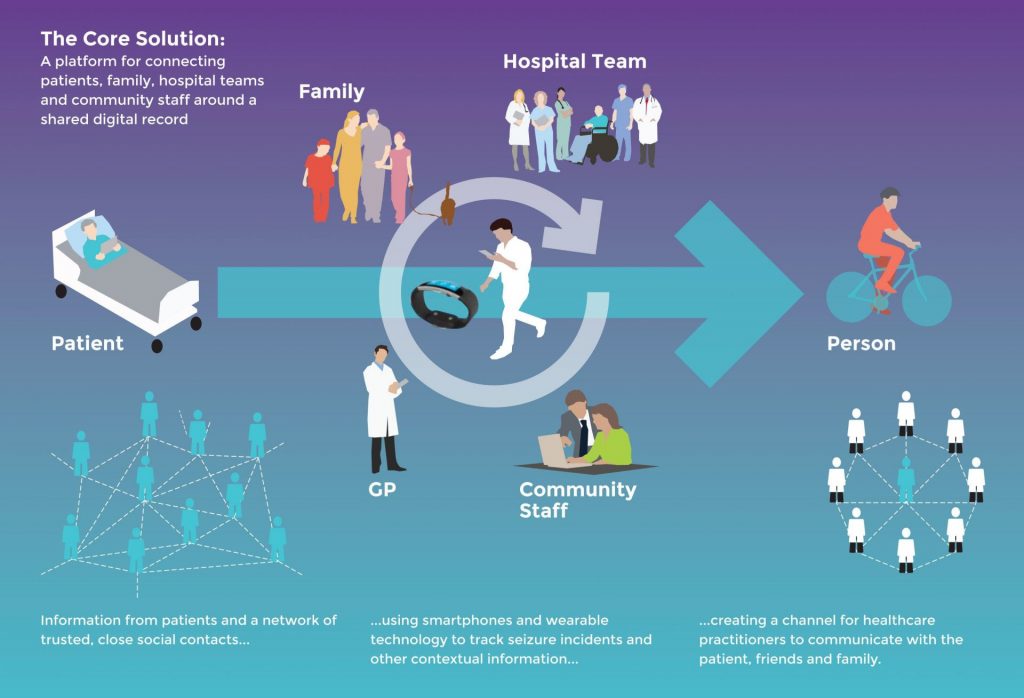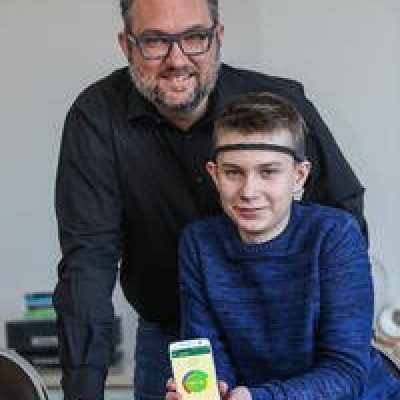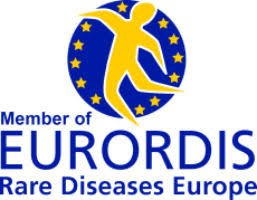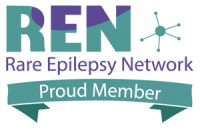The role of technology in enabling self-management of epilepsy
Epilepsy is the most common neurological condition that affects around 65 million people globally and 600,000 people in the UK. Surprisingly there are over 130 different rare and complex epilepsies and 40 different types of seizures which makes it difficult to diagnose and treat these conditions effectively. In the case of Ring Chromosome 20 syndrome [r(20) syndrome] there are no diagnostic and treatment protocols to manage the condition effectively, so practical help to cope with living with regular seizures on a daily basis is important.
There are a wide variety of new technologies that are being developed to increase the accuracy of diagnosis and improve the management of epilepsy. In this blog we focus on just some of the medical devices and technologies available or being developed for self management of epilepsy.
The most common devices are wrist worn alarms and bed monitors designed to detect seizures and let someone know so they can help you. You may be familiar with, or may currently use one of these?
Heart rate sensors – An armband permanently monitors the pulse rate and will activate an alert when the heart rate rises above or falls below a pre-set threshold. The devices detect changes in your heart rate that may indicate an onset of a seizure. These devices are ideal for seizures in sleep.


Electrodermal Activity (EDA) Devices – these wrist worn devices detect changes in physiological conditions related to tonic-clonic seizures i.e. temperature, properties of the skin e.g. sweat secretion which is a common indicator of potential seizure activity. When a seizure is detected, the device will use the connected smartphone to alert carers or loved ones via phone or SMS. [Source: epilepsy.org.uk
Bed Monitors – These come in various types. Some devices are placed under the mattress where it constantly monitors movements. The devices monitor activity until movements associated with seizures are recognised. Verified and ongoing seizures then result in the transmission of alerts to a hand help pager.


Bed Pressure Mats – these detect excessive movement of an individual whilst in bed. The system is designed to sense movement typical of a tonic-clonic epileptic seizure. Upon detection of a seizure the device sends alerts to a hand help pager. [Source: frequencyprecision.com]
Smart Clothing – consisting of a smart shirt and a smart hat with embedded dry-sensors. These sensors constantly monitor the patient’s heart, muscle and brain activities. The data obtained from the sensors is transmitted to a smartphone. The app analyzes the received data and allows the data to be visualized by the patient or a healthcare professional. The data can also be uploaded, through a secure connection, to a cloud system to allow for a doctor to view the data remotely to improve the diagnosis and treatment for patients as well as more accurate information to be collated on the occurrence of seizures. [Source: Smart Clothing]


Headband – this device allows electrical activity in the brain to be captured by dry sensors located on the forehead to capture the EEG (electroencephalography) signal. The information is then sent wirelessly to an app on the smartphone. The technology allows real-time seizure detection and can video-record your seizures automatically. The information captured can be used to alert people around you e.g. a teachers, healthcare workers immediately. The technology provides easy access to the seizure history, which can then be shared with the neurologist or other medical experts. [Source: epihunter]

Airbag Head Protection – A novel solution to protect against head injury during a seizure; a single-use hood-style airbag uses sensors and an algorithm to detect indicative movement patterns and inflates automatically with helium gas to protect the head from fall injury. It has been developed as an alternative to conventional crash helmets for use by cyclists. The Epilepsy Foundation have awarded the’ Epilepsy Innovation Seal of Approval, which will provide funding for further development of the product for this market. [Source: Hövding]
myCareCentric Epilepsy – This innovation combines wearable technologies, shared care records, machine learning, and data analysis tools taking a holistic approach to epilepsy management. The technology can detect seizures using machine learning using the Microsoft Azure platform. It is claimed to be the first solution of its kind to collect information from wearables, smartphones and portals and integrate it with a patient’s clinical record. Patients can also contribute data about mood, stress levels, alcohol intake, diet and medication compliance – providing a holistic view of the patient. Information gathered will include textual, visual and audio data. This will be combined with the temporal, spatial and contextual information relevant to the epileptic seizures of a patient. [Source: Epilepsy Care Alliance]

From this brief delve into devices, it is evident that advancements in technology e.g. emergence of new wearable and mobile digital technologies, the future looks promising in terms of tracking seizures real time, data sharing and analysis (Big data) to help us develop a deeper understanding of how epilepsy affects people’s lives, and to identify protocols to empower self-management of seizures.
Ring20 would love to hear your experiences of using technolgy to help with the management of epilepsy in your every day setting. Have you found a device that really helps you and that you would recommend to others, are there any new technologies that you are excited to learn more about, or are there any devices that you would advise against? Let’s share our knowledge so we can all live happier, healthier lives.









